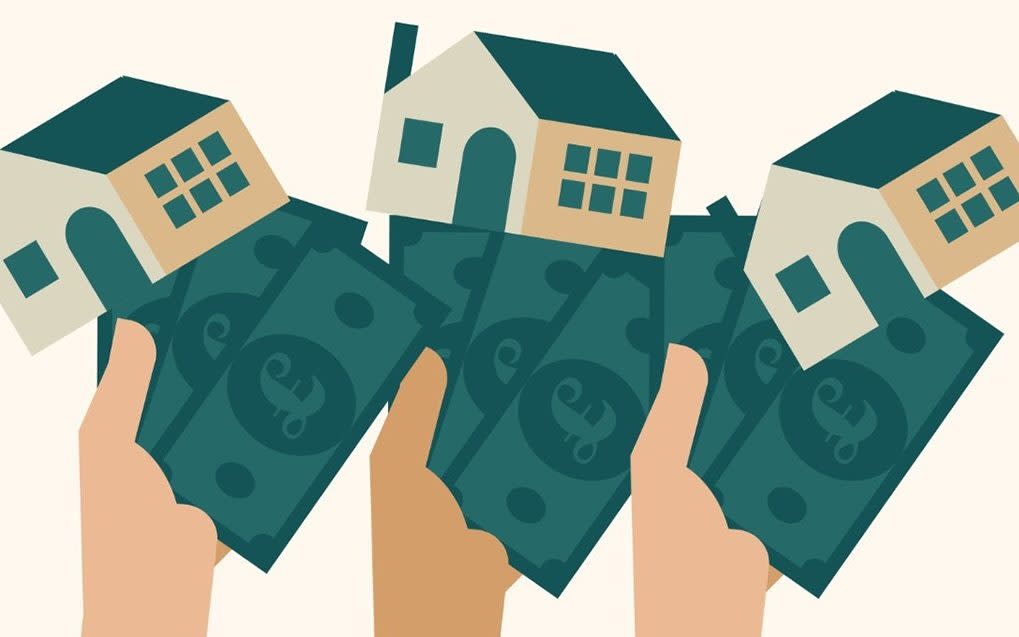Banks bring back mortgage deals – but with rates of almost 6pc

Mortgage deals are coming back to the market after days of economic turmoil, but borrowers face paying rates of almost 6pc.
Hundreds of loans were removed from sale last week, but banks have slowly started to return to the market, according to analyst Moneyfacts. It said there were 2,358 loans on the market at close of business on Monday, up from 2,262 on Sunday – a rise of 4.2pc.
While experts welcomed the increased number of loans on the market, borrowers must now contend with significantly higher rates.
The average two-year fixed-rate reached 5.97pc on Tuesday, according to Moneyfacts. This was a 1.23 percentage point rise from 4.74pc on the day of the Chancellor Kwasi Kwarteng’s mini-Budget on September 23.
Halifax, part of Lloyds Banking Group, Britain’s biggest mortgage lender, said it would raise rates for new borrowers on Wednesday. The bank said many of its new deals would be priced above 5pc, with a two-year fix for new-build buyers charging 6.59pc.
The increases have cost homeowners hundreds of pounds a month. A borrower taking out a new two-year fixed deal for a £400,000 home with a 20pc deposit would now face monthly repayments of £2,056 on average, compared with £1,823 on September 23.
Five-year fixes rose from an average of 4.75pc to 5.75pc during the same period. As recently as December, when Bank Rate was 0.1pc, the average rate for a two-year deal was 2.34pc.
The number of mortgage deals available has increased in the last few days but there are still 40pc fewer deals than there were on the day of the mini-Budget, when 3,961 loans were available.
Adrian Anderson of Anderson Harris, a mortgage broker, said the increase in deals was positive for homeowners, but warned the offers coming back to the market were significantly more expensive.
“It's great to have more loans available, but not in terms of how they're priced,” he said.
He said “swap rates”, which are the rates that lenders use to price loans alongside the central Bank Rate, had surged and were being passed on to mortgage borrowers.
Skipton Building Society and Virgin Money were among providers that had withdrawn mortgage deals and have since introduced new offers at much higher rates in recent days, he said.
Mr Anderson said as well as the large rise in swap rates, some banks had been overwhelmed by customer demand, forcing them to price loans higher.
He predicted more loans would return to the market as the economic situation becomes more stable, albeit at higher rates.
David Hollingworth of L&C Mortgages, another broker, said: “I expect that we will continue to see rates coming and going quickly this week but it’s positive to see lenders returning to the market after their temporary withdrawal.”
Mark Harris, of mortgage broker SPF Private Clients, said markets had “reacted positively” to Mr Kwarteng’s tax U-turn on Monday and swap rates had reduced this week.
“Lenders can now provide fixed rates without fear of having to immediately withdraw them. This is good news for borrowers as there will be more choice available,” he said.
Borrowers elsewhere in Europe have also seen rates rise. Eurozone mortgage holders are facing the highest borrowing costs in seven years, European Central Bank figures from August showed.
The data is yet to reflect the ECB’s September rate rise, meaning the squeeze on household budgets for new buyers and those looking to remortgage will be even tighter.
Interest rates on new loans reached 2.26pc in August, which is the highest level since November 2015. This was 0.11 percentage points higher than in July.
The ECB raised its three interest rates by a record 0.75 percentage points in September. This will add further pressure on households who are already facing the fastest rising consumer prices in the union’s history and shrinking real wages.
Eurostat, the EU statistics agency, estimated inflation reached 10pc in September.
Most mortgage deals have increased in price. Loans with a variable rate or a one-year fix jumped by 0.24 percentage points to 2.08pc. Meanwhile, mortgages fixed for up to five years rose by 0.18 percentage points to 2.44pc.
Banks have also started paying out more interest on savings but these rates are lower than those of mortgages, the data showed. Deposits redeemable at three months’ notice on average pay 0.7pc in interest, an increase of 0.24 percentage points.

 Yahoo Movies
Yahoo Movies 
